Look up: the world's most spectacular ceilings
Heights of fancy

Vladimir Goncharenko/Shutterstock
You need to crane your head upwards to gaze at some of the world’s most amazing artworks and architecture. From Roman domes and Renaissance frescoes to medieval tilework and modern art installations, there are some awesome ceilings out there if you put your eyes up.
Read on to see incredible ceilings from around the world...
Topkapi Palace Museum, Istanbul, Turkey
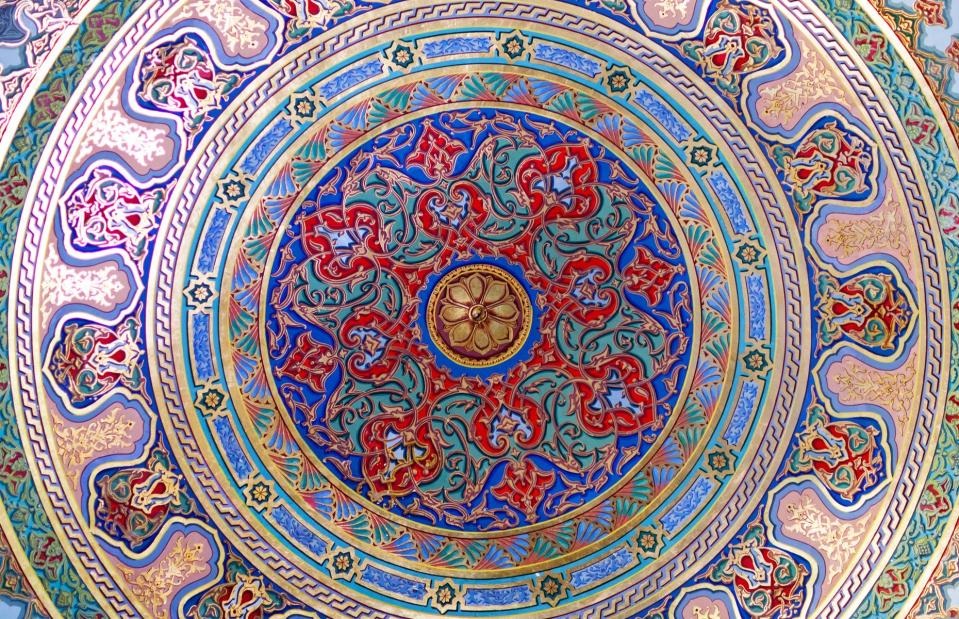
Zzve/Shutterstock
Built between 1460 and 1478 by Sultan Mehmed II, this elaborate palace was the home of the Ottoman sultans and courts until the middle of the 19th century. It became a museum in the 1920s. As well as the incredible riches on display in its countless rooms, pavilions and courtyards, the vast complex has an array of decorative ceilings to ogle at. Some of the most lavish can be found in the harem, the exquisitely tiled family quarters. If you're visiting, note the museum is closed on Tuesdays.
Duomo, Florence, Italy
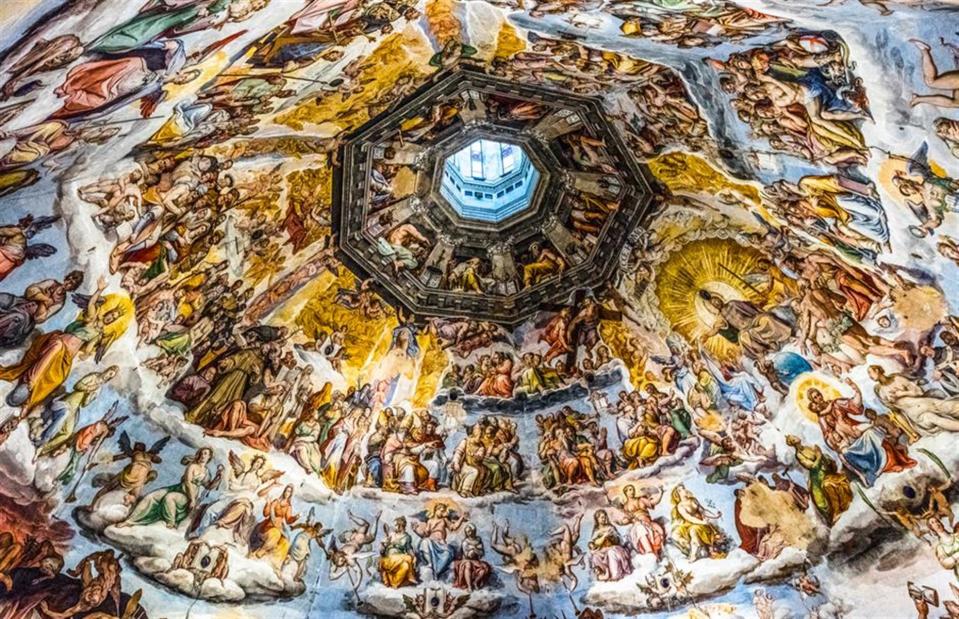
Eric Isselee/Shutterstock
Even the most devout atheist is likely to doubt their own beliefs when gazing heavenwards in Florence’s magnificent Renaissance cathedral. Filling the interior of the mighty cupola, which was built by Filippo Brunelleschi, are Giorgio Vasari's frescoes of the Last Judgement. Federico Zuccari took over after Vasari died in 1577 and completed the enormous artwork in 1579. See the colossal scene up close by climbing up the cupola. The views of the dome and Florence are also divine.
The Bellagio, Las Vegas, USA

Ruslan Kalnitsky/Shutterstock
It’s easy to become distracted during check-in at Las Vegas’ exclusive hotel The Bellagio with the extraordinarily beautiful and colourful glass installation that blooms above your head. Fiori di Como is the work of artist Dale Chihuly, who was commissioned to make the art installation for the opulent hotel's lobby in 1998. It’s made up of over 2,000 hand-blown glass flowers and was inspired by the sight of Italian meadows during springtime.
Galeries Lafayette Paris Haussmann, Paris, France
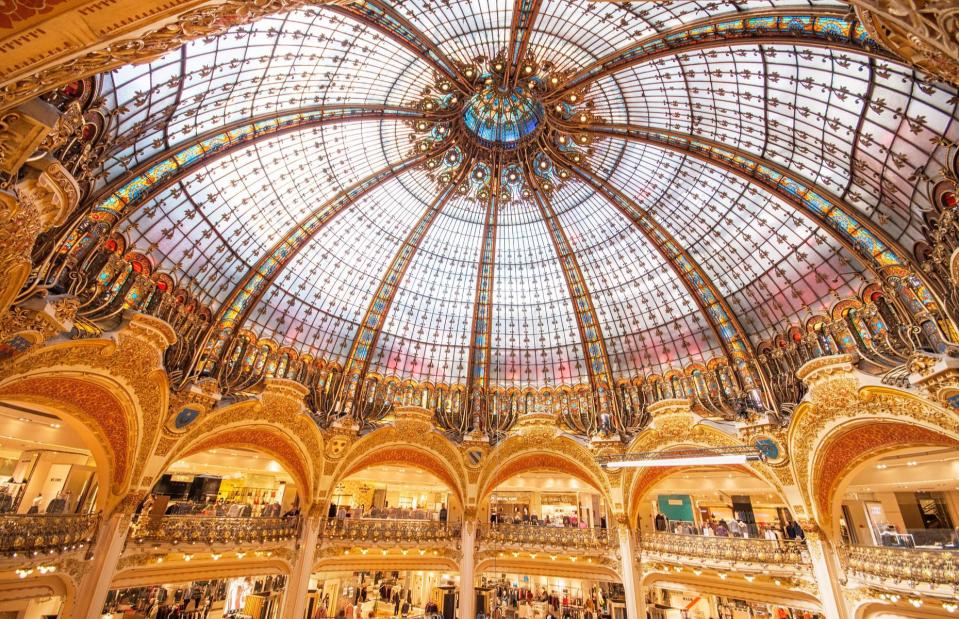
Botond Horvath/Shutterstock
Shopping is a near religious experience at this remarkable Art Nouveau department store in the 9th arrondissement of Paris. The striking dome of Galeries Lafayette Paris Haussmann, which reaches a height of 140 feet (43m), was built in 1912. Owner Theophile Bader wanted to make his relatively modest store into a “luxury bazaar”. Glass-maker Jacques Gruber was commissioned to design the Neo-Byzantine style stained glass windows. The store is said to be Paris’s second most popular sight after the Eiffel Tower.
Westfield World Trade Center, New York, USA
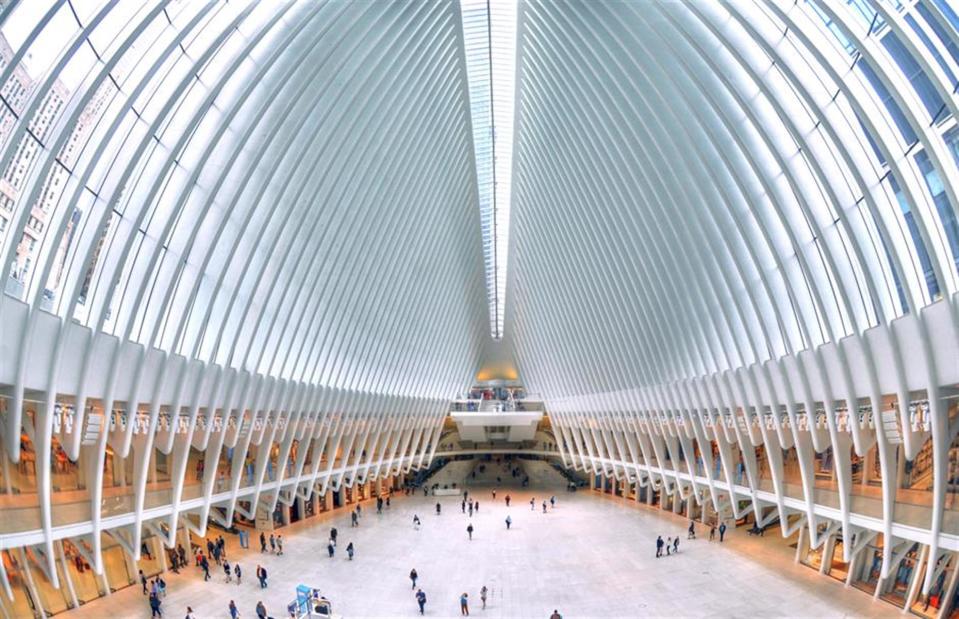
The World in HDR/Shutterstock
The light-filled cavernous centrepiece of this mall, known as the Oculus, was inspired by the image of a dove being released from a child's hands. Spanish architect Santiago Calatrava designed it as part of the 365,000-square-foot (33,909sqm) shopping area in the World Trade Center complex. Poignantly, the Neo-Futuristic structure was designed so that every 11 September at 10:28am the sun shines directly through the central skylight to create a symmetrical shaft of light.
York Minster, York, UK
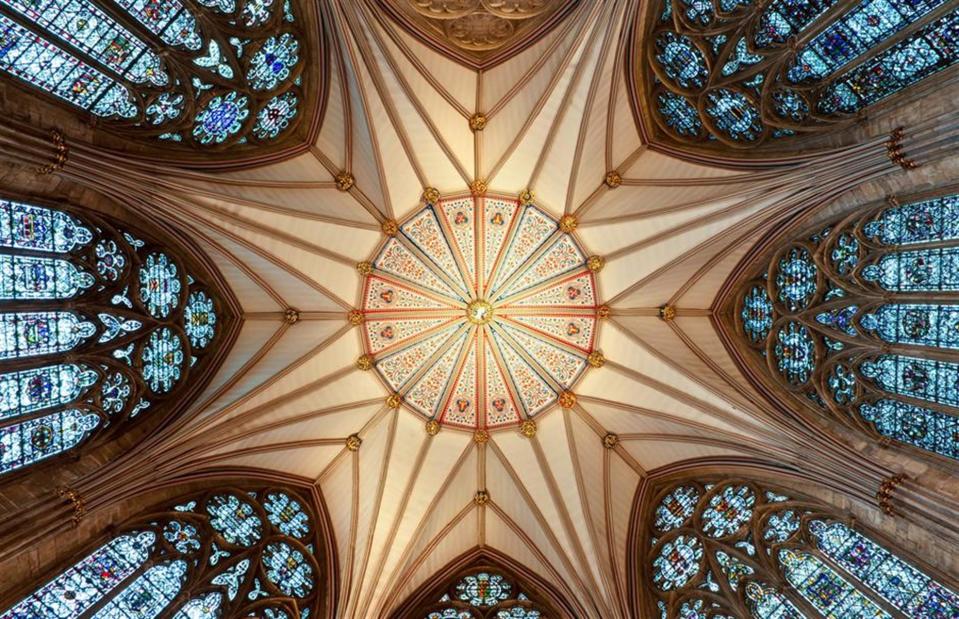
PhilMacDPhoto/Shutterstock
The elaborate ribbed wooden roof of the Chapter House in York Minster is an incredible feat of medieval structural engineering and design. Work began on the octagonal room, which is one of the oldest parts of the church, in 1260 and was completed in 1286. The enormous cathedral is also known for its extraordinary collection of medieval stained glass. Seek out the Rose Window, Great East Window and the Five Sisters before climbing the tower to ogle the cathedral’s gargoyles and carvings.
El Capitan Theatre, Los Angeles, USA

Alizada Studios/Shutterstock
Revel in the glamour of the movies at the stunning restored movie palace cinema El Capitan, on LA’s Hollywood Boulevard. Dating back to 1926, the lavish theatre has a stunning gold-metal leaf proscenium ceiling in its grand East Indian auditorium. It was converted from a playhouse to a movie theatre in 1941 and is now operated by the Walt Disney Company. Keep an eye on its website for opening times then catch a classic Disney movie or take a tour to marvel at the ceiling. Shows are preceded with music played on the grand 1920s Mighty Wurlitzer organ.
Blue Mosque, Istanbul, Turkey

Reimar/Shutterstock
With its distinctive six minarets, the early 17th-century Blue Mosque is one of Istanbul’s must-see sights. While its exterior is imposing, head inside to see its unearthly beauty. Fine blue İznik tiles line its walls and sumptuous semi domes and central domes, with their dazzling stained glass, rise above you. Some of the original glass was given to the sultan by the Signoria of Venice. Tourists can enter the holy building, apart from during prayer time, and women must cover their hair.
The Pantheon, Rome, Italy
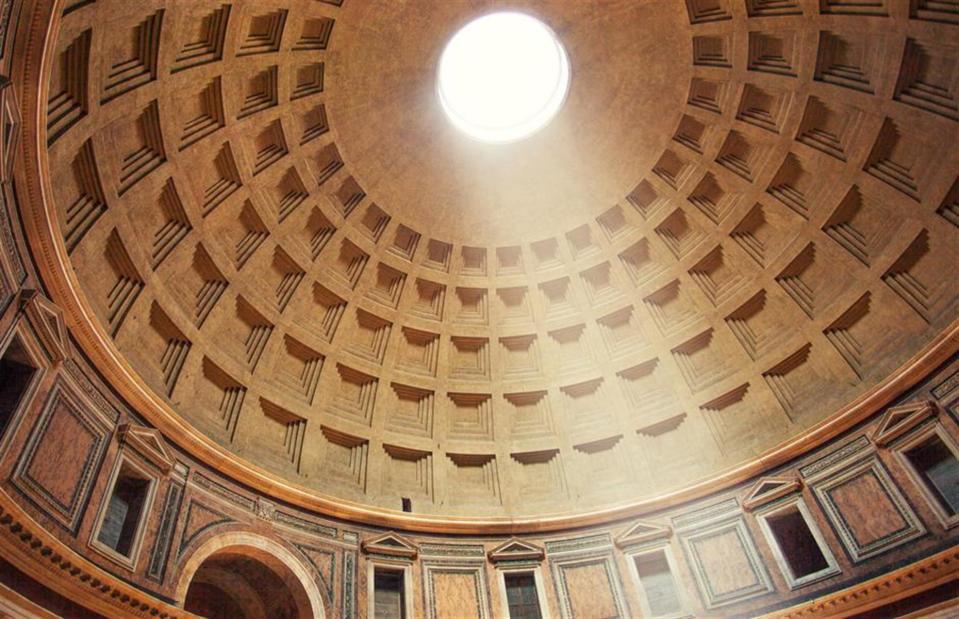
Gladskikh Tatiana/Shutterstock
It's hard not to go weak at the knees as you gaze up at the colossal and ancient dome of Rome’s best-preserved classical monument and contemplate how many generations have done the same. The third temple to sit on the site, it was constructed by the emperor Hadrian in AD 125. The dome, with its central oculus, shows the civilisation’s incredible engineering and design prowess. At 142 feet (43m), it remains the single largest unreinforced concrete dome in the world. It was consecrated as a church in 609.
333 Collins, Melbourne, Australia
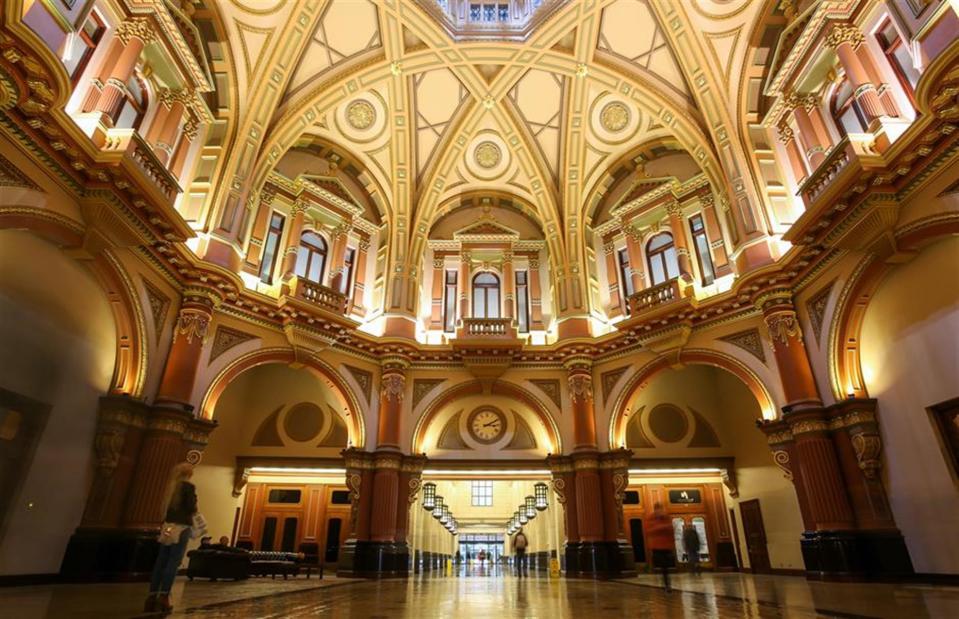
Marcel van den Bos/Shutterstock
Melbourne’s Collins Street is known for its historic architecture, designer boutiques and bar-laden laneways but few people know about this glorious sight that lurks inside the modern office building at number 333. The stunning entrance hall is part of an old banking chamber that was built in the 1890s by the Commercial Bank of Australia. With its octagonal dome, barrel-vaulted ceiling and grand granite columns and arches, it’s like stepping back in time. The public can visit the lobby, which is also used as an events venue.
The Gallery of Maps, the Vatican Museum, Vatican City

Anton_Ivanov/Shutterstock
The Vatican is laden with sumptuously decorated walls and ceilings, most famously the Sistine Chapel (see later in the gallery), and the Gallery of Maps is no exception. This long gallery with its series of exquisite painted topographical maps was commissioned by Pope Gregory XIII in 1580. His cosmographer and priest Ignazio Danti undertook the huge feat. Look up to see frescoes of stories from the lands depicted in the maps below.
The Chicago Cultural Centre, Chicago, USA
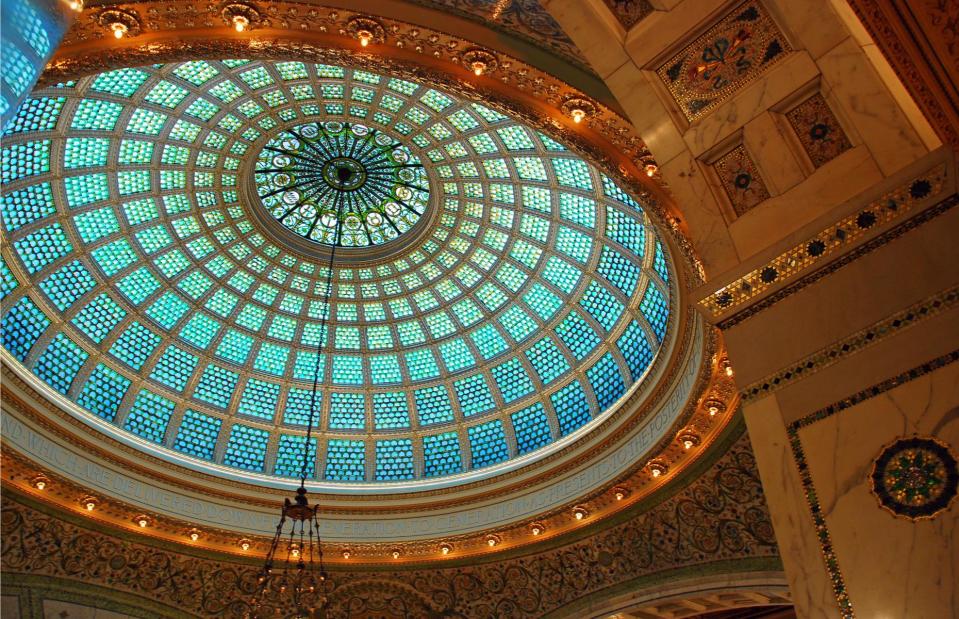
James Kirkikis/Shutterstock
Forget window shopping at Tiffany’s – ogle at its intricate mosaic glass work inside the Chicago Cultural Centre instead. The sumptuous building, which was constructed in 1897 as Chicago’s first central public library, contains the world’s largest Tiffany glass dome. The shining centrepiece is 38 feet (11.5m) in diameter and is made of 30,000 pieces of glass. There’s another stunning dome on the north side of the building – that one is 40 feet (12m) in diameter and made up of 50,000 pieces of glass.
Notre-Dame Cathedral Basilica, Ottawa, Canada
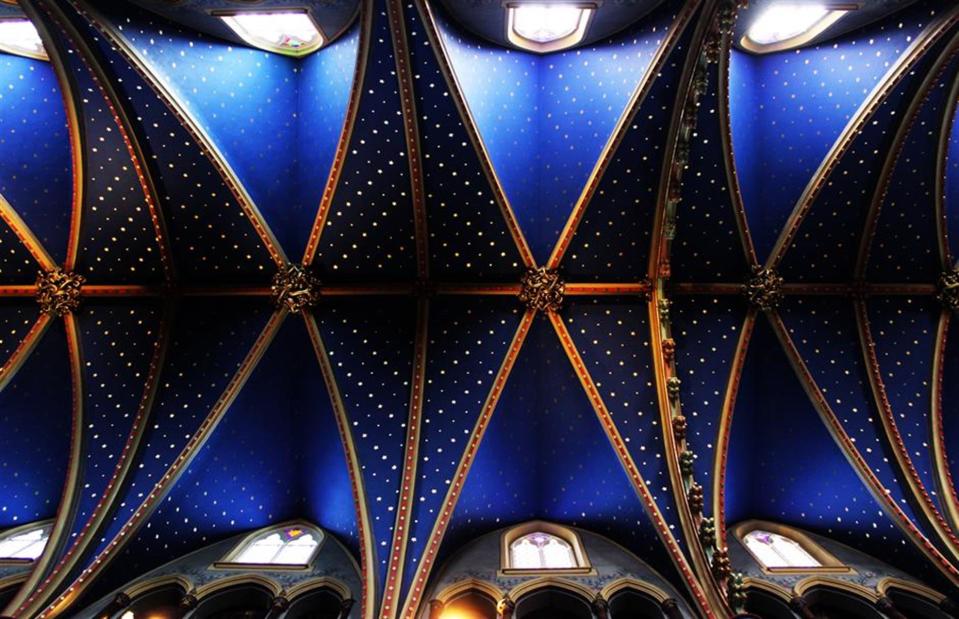
Cory Woodruff/Shutterstock
You could stare for hours at the golden stars that shine brightly from the heavenly indigo-coloured vaulted ceilings of Ottawa’s oldest and largest church. Built in the 1840s, the basilica’s richly decorated interior is one of the finest in all of Canada. The cathedral, which is the seat of the city's Roman Catholic archbishop, runs guided tours from May until October.
St. Stephen's Basilica, Budapest, Hungary

Konstantin Tronin/Shutterstock
Budapest’s imposing 19th-century basilica is enormous. Sumptuous decorations flourish inside its cavernous interior, but look up and you’ll really be awestruck by the gleaming beauty of its dome. Little windows allow natural daylight to illuminate its frescoes and gold gilding. The place of worship was dedicated to St Stephen, the first king of Hungary. His mummified hand is kept in a glass case to the left of the main altar. For incredible city views, head up to the dome's observation deck, currently open.
Stadion station, Stockholm, Sweden

Norman Tsui/Unsplash
Stockholm’s subway system has been lauded as 'the longest art gallery in the world' due to the paintings, installations, mosaics and sculptures that adorn 90 of its 100 stations. It’s all very distracting for the first-time visitor. If you do miss the train at Stadion Station, you can gaze upwards, as you wait, at the glorious rainbow that's part of the station's blue, cave-like walls. Got some time? Take a guided tour of the stations.
Hall of the Abencerrajes, the Alhambra, Granada, Spain
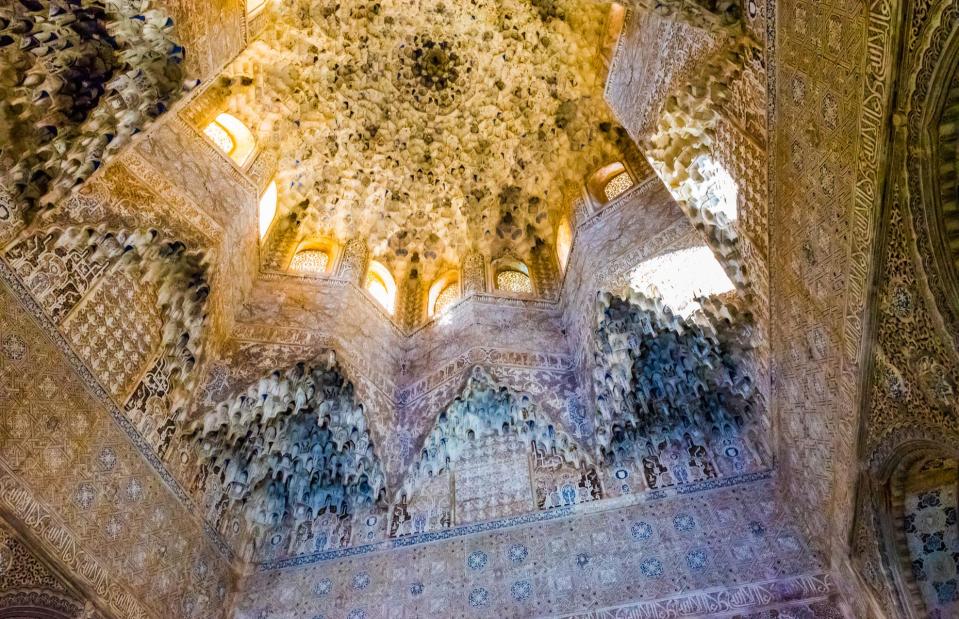
Takashi Images/Shutterstock
The ethereal ceiling of the Alhambra’s Hall of the Two Sisters is a definite highlight of Granada’s Moorish masterpiece. Look up at your peril, as you won’t want to look down in a hurry. The wonderful dome displays one of the world's finest examples of intricate mocarabe or stalactite work – ornamental design typical of Islamic architecture. Small windows allow light to filter through and spill dreamily down the exquisite dome.
The Temple of Heaven, Beijing, China
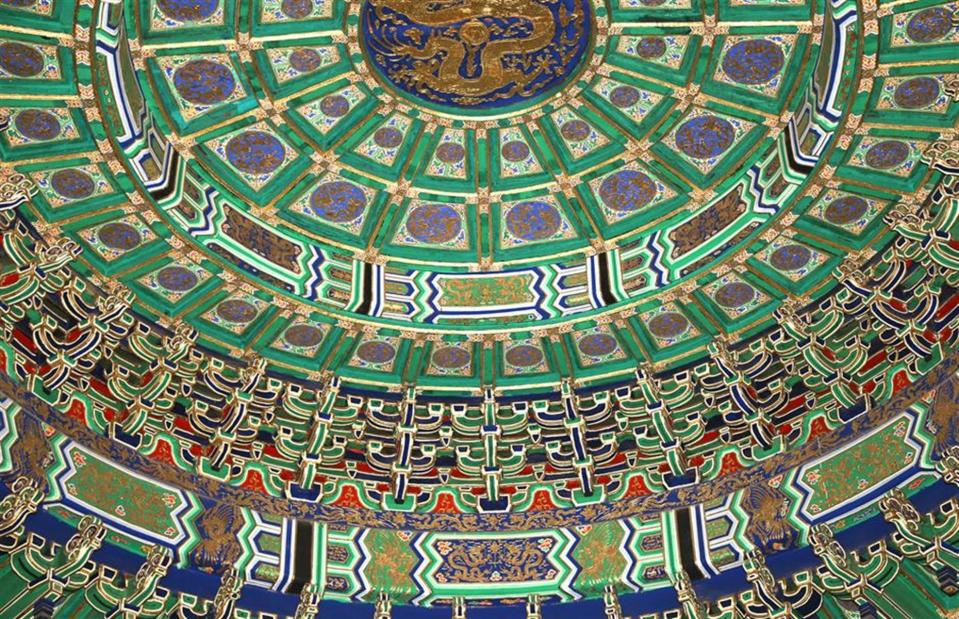
VLADJ55/Shutterstock
The astonishing precision and vibrant colours that characterise the central dome of the circular Hall of Prayer for Good Harvests is just one of many extraordinary ceilings in this vast temple complex in Beijing. This is the most famous, however, with its nine golden dragons carved into the roof. The sacred site dates back to the 15th century and was where emperors of the Ming and Qing Dynasties offered sacrifices to the gods of heaven and Earth.
Piccolomini Library, Siena Cathedral, Italy

Anna Pakutina/Shutterstock
Prepare to be dazzled by the gold, red and blue rectangular ceiling and frescoes that adorn the extravagant Piccolomini Library in Siena’s masterful Duomo (which has now reopened). It was built as a tribute to Enea Silvio Piccolomini, a powerful Italian nobleman who became Pope Pius II, by his nephew. The elaborate frescoes were painted by Pinturicchio between 1503 and 1508 and detail stories from the Pope's life. The Piccolomini family symbol sits in the centre.
Andaz London Liverpool Street, London, UK
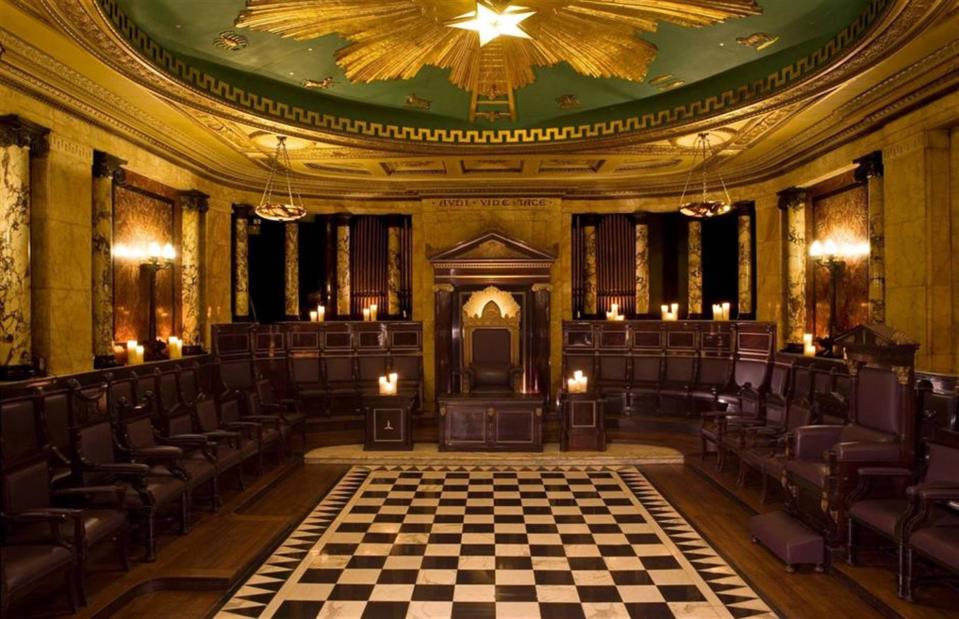
Andaz London Liverpool Street
An incredible blue-domed ceiling with gold zodiac detail is the crowning glory of the Grade II-listed Freemasons temple hidden away in east London. The covert Grecian-style temple was built in 1912 within the then Great Eastern Hotel, a beautiful redbrick Victorian station hotel designed by the same architects of the Houses of Parliament. Now part of the Andaz London Liverpool Street, the opulent space can usually be visited on request.
Sagrada Familia, Barcelona, Spain
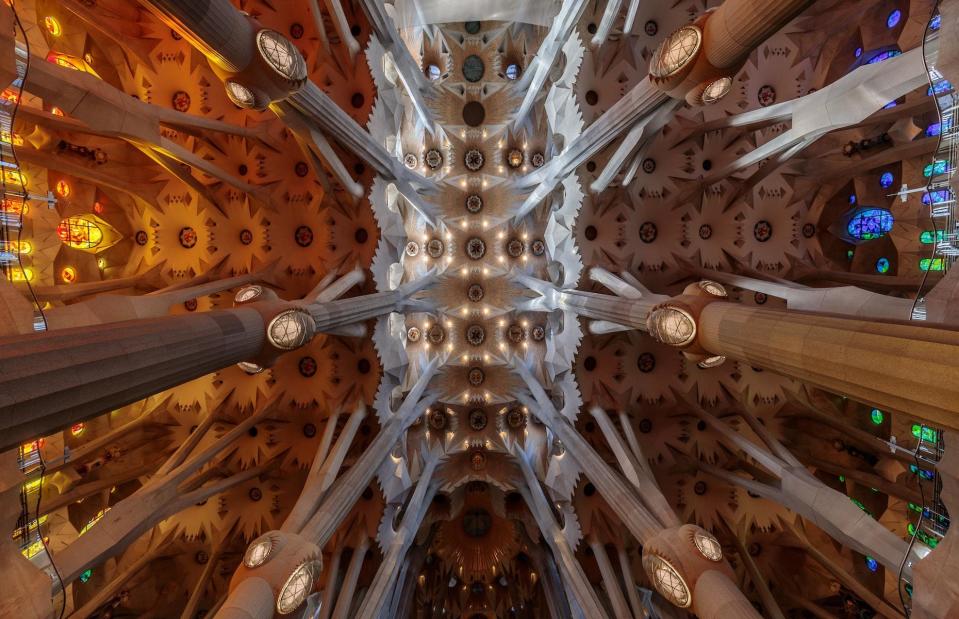
Andrey Grinkevich/Unsplash
Antoni Gaudi’s unfinished masterpiece is a feast for the eyes. Intricate symbolism is at play throughout the building, both religious and natural, including its towering ceiling. Look up and you’ll see the dizzying, forest-like design of the vast ceiling vaults. Reaching up to 200 feet (61m) in height, the columns appear like trees, branching out towards the heavens. When the basilica is complete (expected in 2026), it will be the tallest church in the world.
Markthal, Rotterdam, Netherlands
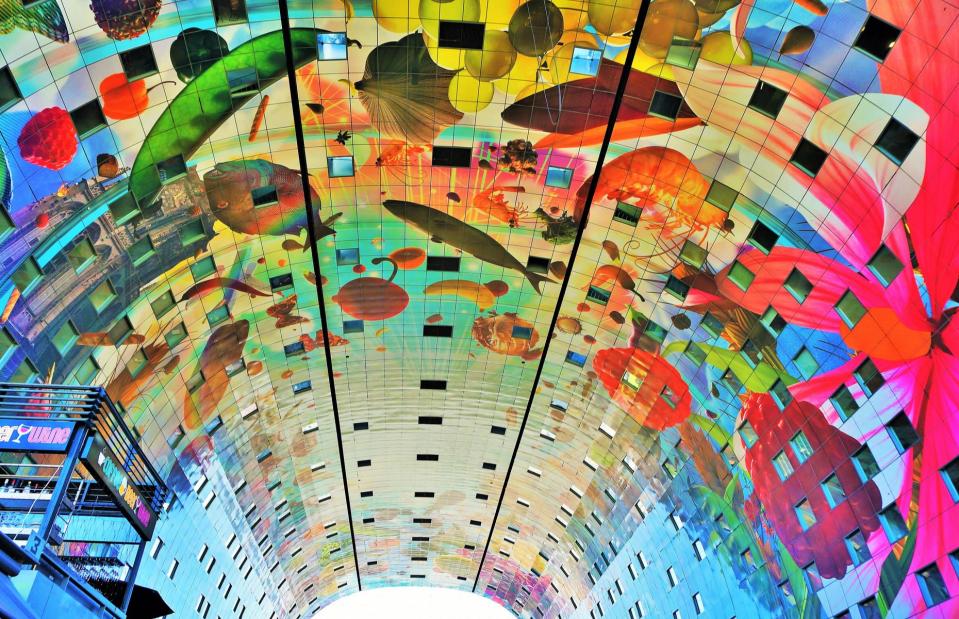
Stray Toki/Shutterstock
The gigantic and vibrant ceiling mural adorning the ceiling of Rotterdam’s covered market is one the biggest artworks in the world. Cornucopia, by Dutch artists Arno Coenen and Iris Roskam, measures over 36,000 square feet (3,344sqm) and spans the entire interior of De Markthal. The creative port city has a wealth of bold architecture and eye-catching public art. Dedicated walking tours will help you see the best of it.
San Diego International Airport, California, USA
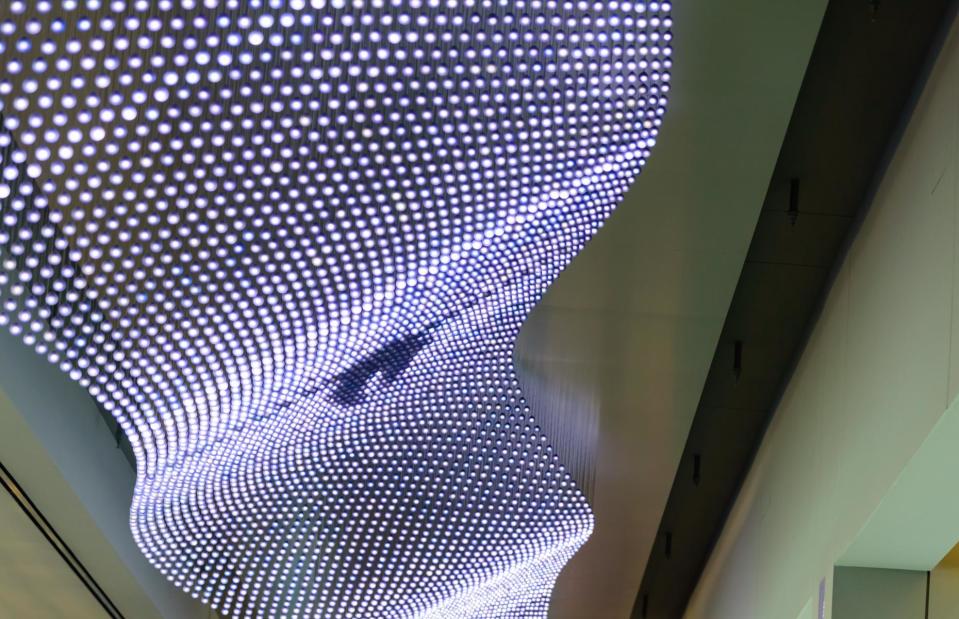
achinthamb/Shutterstock
Public art in airports isn’t all that unusual but Jim Campbell’s installation in San Diego International Airport elevates airport art to another level. The Journey is an undulating 700-foot-long (213m) and six-foot-wide (1.8m) “ribbon of light”. Made up of 38,000 suspended LED pendant lights, the artwork dances along the ceiling of Terminal 2’s West Central and North Concourse. Look closely and you'll see images of people and birds fluttering throughout the sculpture. Just don’t be so dazzled that you miss your flight.
The Romanian Athenaeum, Bucharest, Romania
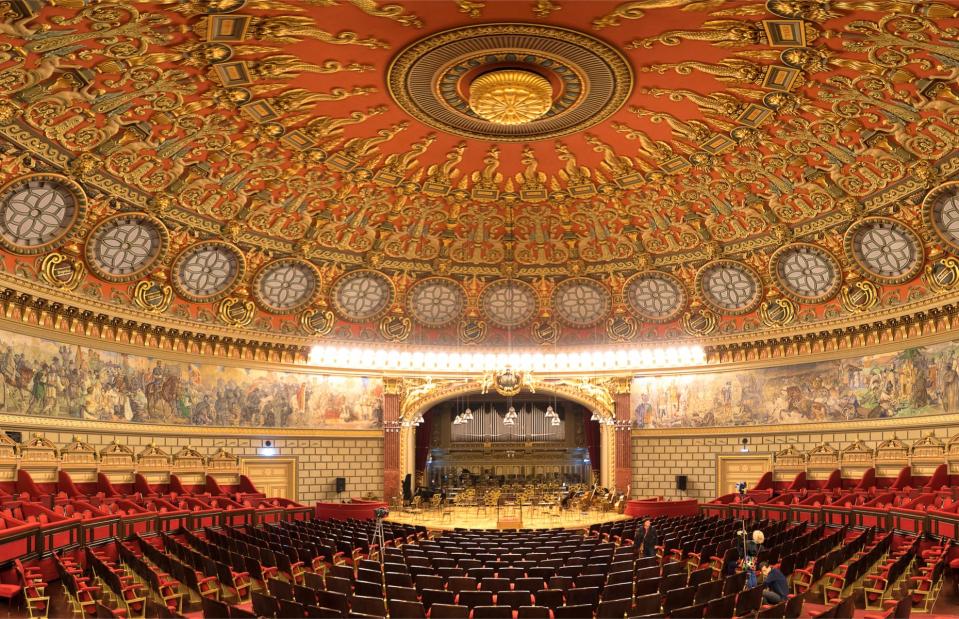
Mitzo/Shutterstock
The plush auditorium of Bucharest’s historic Athenaeum is a splendid place to watch a classical music concert. The detailed fresco which circles the huge dome details scenes from Romanian history. Be sure to find your seat early so you can gaze at its grand red and gold ceiling. The ornate concert hall, which is in the centre of the city, was built in 1888 and hosts a range of concerts and music shows.
Abdulaziz Khan Madrassah, Bukhara, Uzbekistan
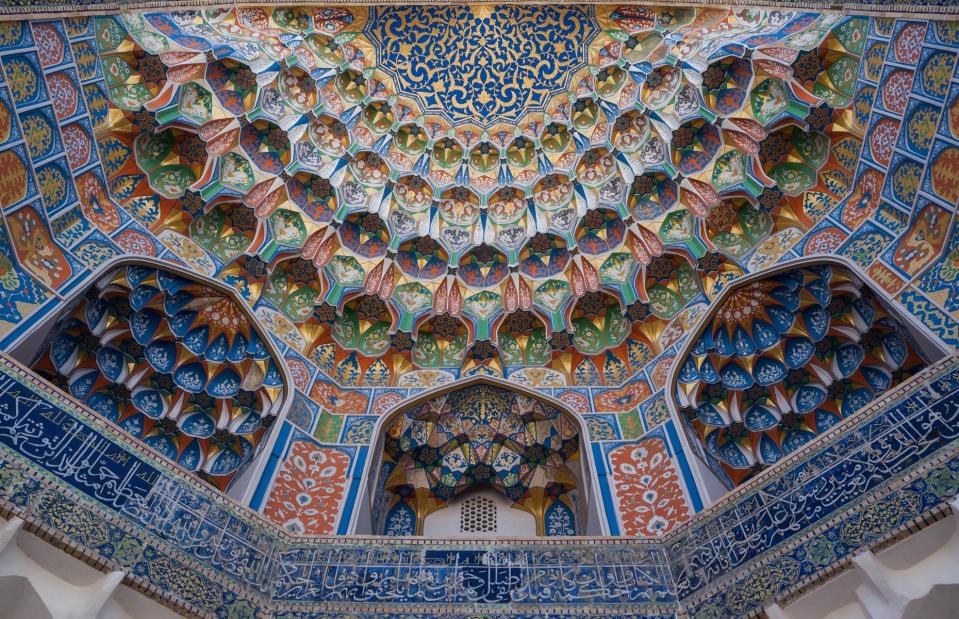
Vladimir Goncharenko/Shutterstock
Famed for its blue-mosaic covered mosques and elaborate madrassah, the historic centre of Bukhara has plenty of places that demand a lot of neck craning. But be sure to make a beeline for the Abdulaziz Khan Madrassah (Museum of Wood Carving Art) to ogle at its wondrous entrance. Built in 1652, the museum's highly decorative facade and porch is one of the most outstanding with its beautiful blue, yellow, turquoise, pink and green tiles. It sits opposite the magnificent Madrassah of Ulughbek.
Austrian National Library, Vienna, Austria
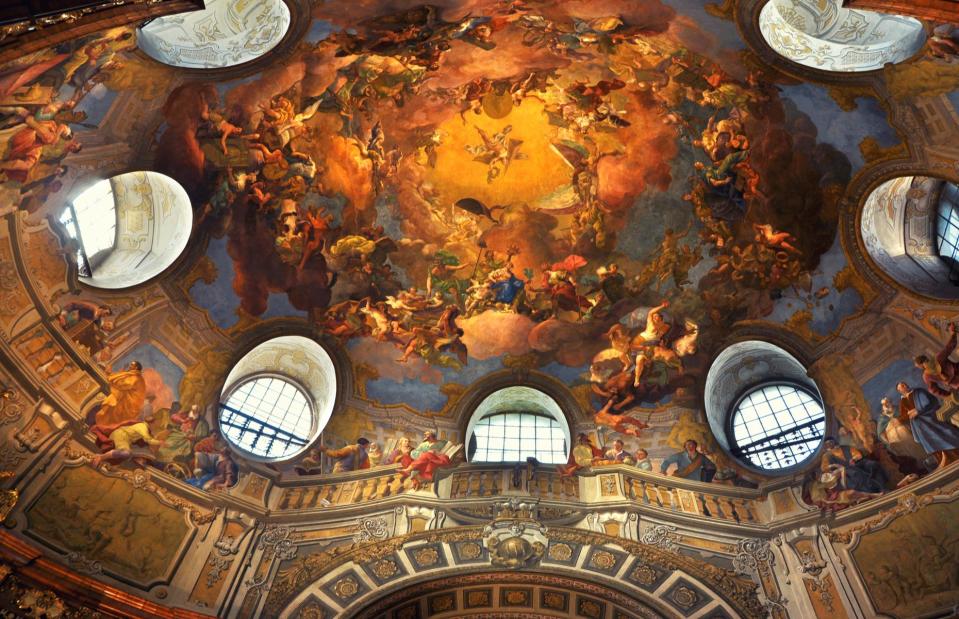
Minoli/Shutterstock
As you'd imagine, the spectacular State Hall of the biggest baroque library in Europe is a sight to behold. The one-time Court Library is 260 feet long (79m) and crammed with more than 200,000 precious volumes. It's also crowned by a splendid baroque dome adorned with frescoes by court painter Daniel Gran. It was built under the orders of Emperor Charles VI as a private wing of the Hofburg imperial residence in the 18th century. Keep an eye out for the huge Venetian baroque globes too.
The British Museum, London, UK
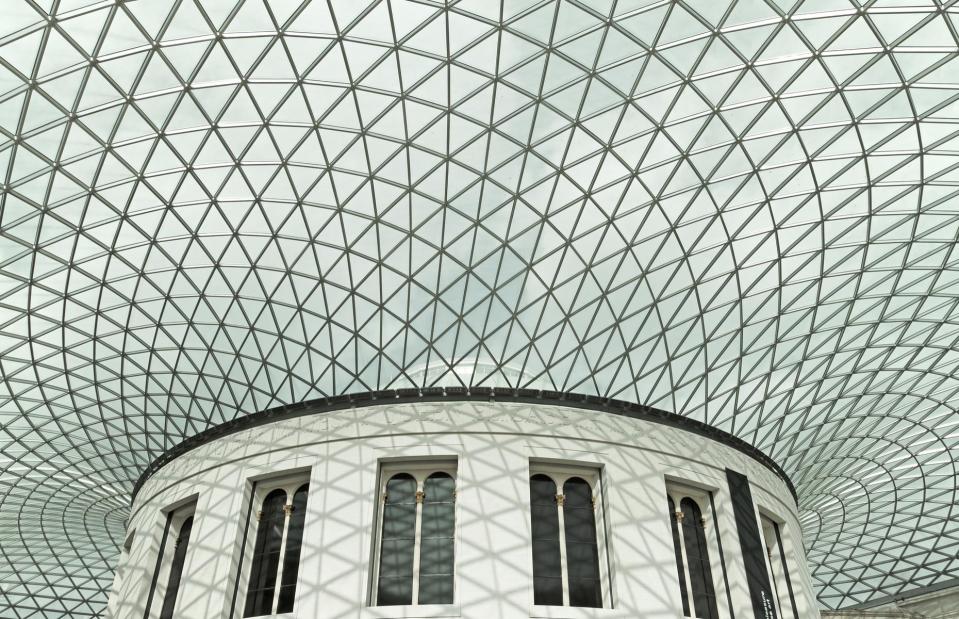
Iacopo Guidi/Shutterstock
The vast glass and steel roof of the Queen Elizabeth II Great Court cannot fail to draw your eyes upwards. Designed by Foster and Partners in 2000, the inner courtyard of the British Museum is the largest covered public square in Europe. Its curved, criss-cross-patterned roof is made out of 3,312 panes of glass, no two of which are the same. At the centre of the extraordinary space is the illustrious 19th-century Reading Room. It too has a special ceiling with its elegant blue, cream and gold dome.
Grand Central Station, New York, USA
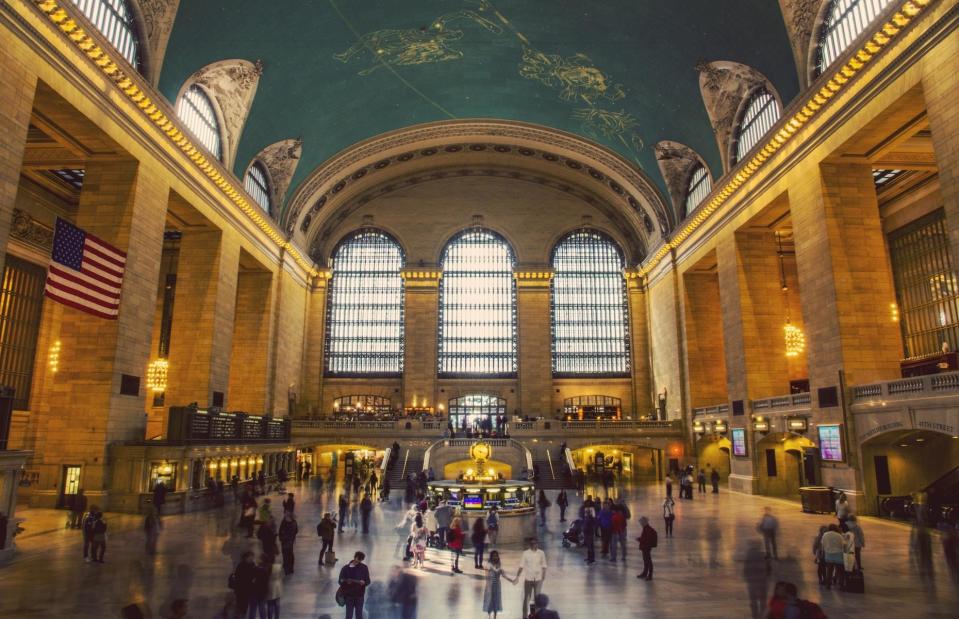
Remi Zik/Unsplash
Even the busiest commuters pause to look up at the glorious teal-coloured astronomical ceiling in Grand Central Station. Look closely at the 12 golden constellations signs and you may spot a small, dark rectangle – it’s near the crab’s claw in the northwest section. The patch was left by restorers in the 1990s to show how dirty the ceiling had become after decades of passengers smoking in the station. The giant gold clock (reputedly worth £15.3 million/$20m) is another sight in this glamorous terminal that will have you gawping.
National Museum of Prague, Prague, Czechia
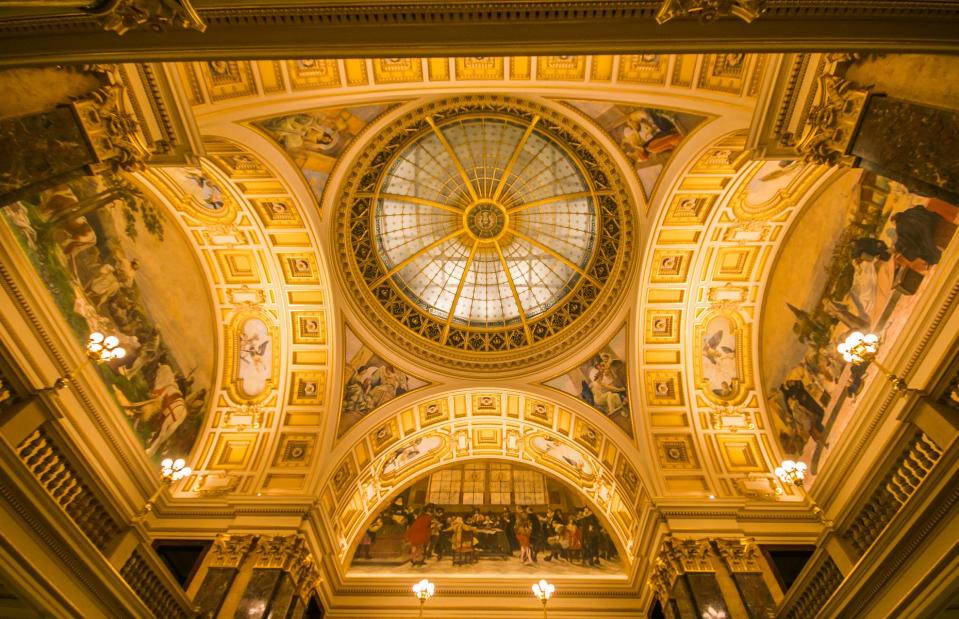
Buffy1982/Shutterstock
The elaborate ceiling frescoes that decorate the entrance hall to the oldest and largest museum in Czechia are just one of many lavish treasures on show here. The colossal Neo-Renaissance structure, which presides over the upper part of Wenceslas Square, was designed by Josef Schultz and opened in 1891. It’s also characterised by a central dome, grand sweeping staircase, sculptures and intricate stonework.
Chehel Sotoun Palace, Isfahan, Iran
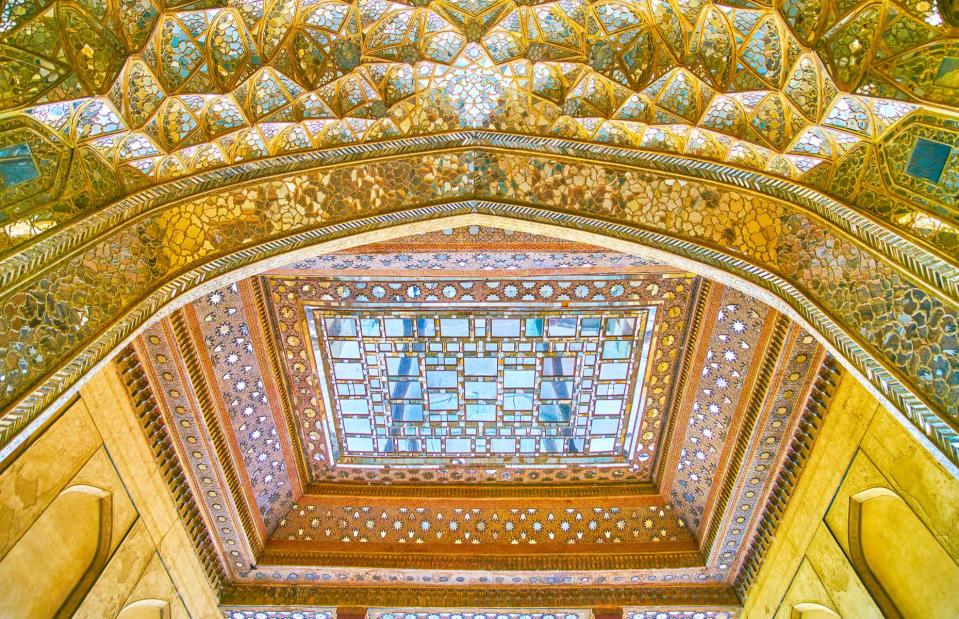
eFesenko/Shutterstock
The mosques and palaces of Isfahan, the ancient capital of Iran, are strewn with exquisite examples of classical Persian and Islamic art. Opulent 17th-century Chehel Sotoun Palace is no exception. It was built as a pleasure pavilion within a beautiful Persian garden. Inside the extravagant great hall, the walls and arched ceilings are awash with gold, mirrors and large frescoes that tell of great battles and conquests of the Safavid dynasty.
St. John's Co-Cathedral, Valletta, Malta
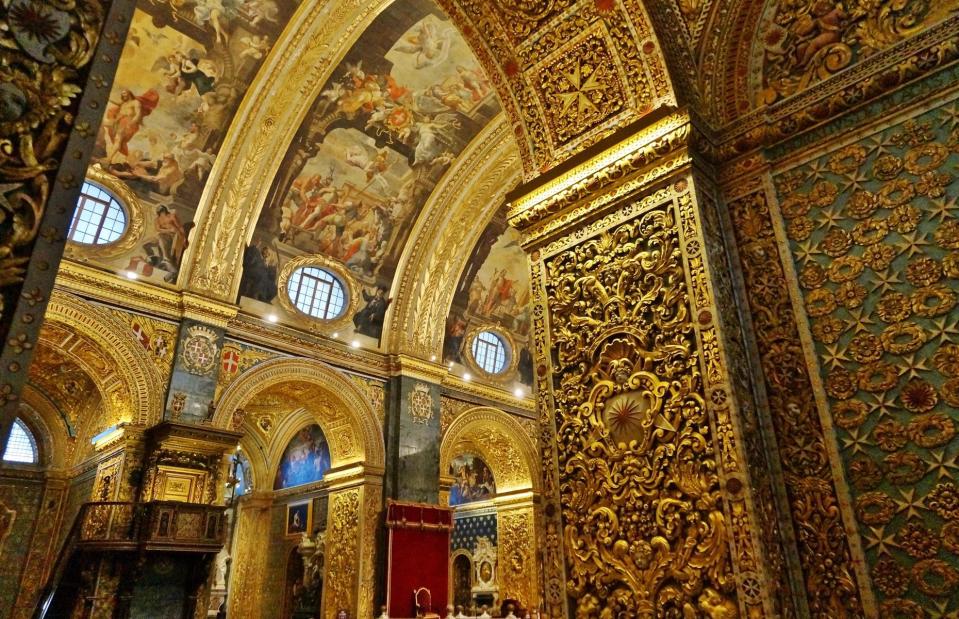
EQRoy/Shutterstock
The opulent walls and ceilings of Valletta's 16th-century church make it one of the most beautiful in the world. The intricately carved stone walls, gold gilding and grandiose paintings of its vaulted ceiling and side altars tell a lot about the Mediterranean's history and wealth. Built by the Knights of St John, the cathedral's highly decorative interior is lined with some of the most incredible 16th and 17th-century art. There's even a rare painting by Caravaggio.
Sistine Chapel, the Vatican Museum, Vatican City
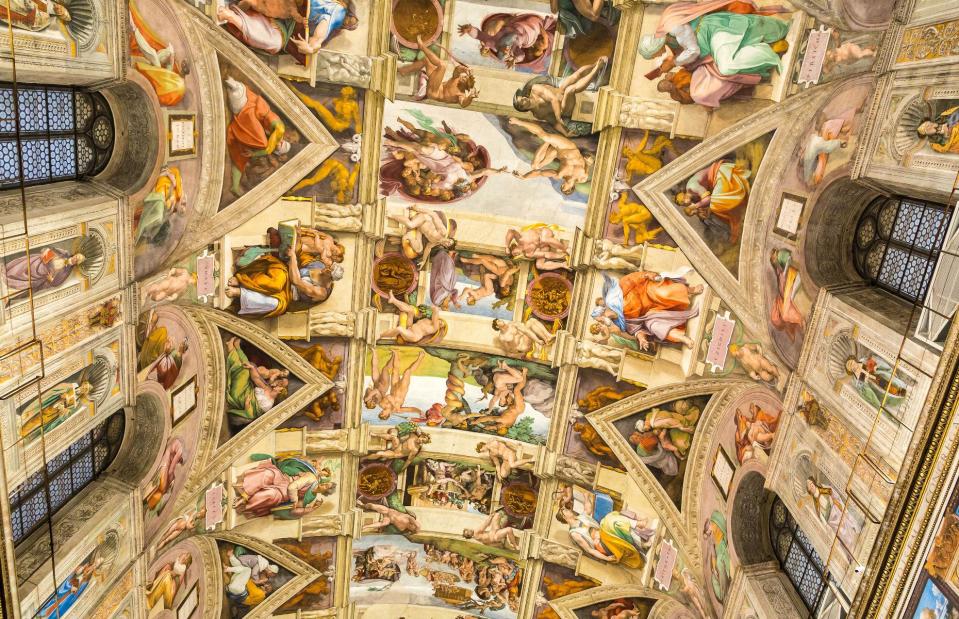
S-F/Shutterstock
Probably the most famous painted ceiling in the world, Michelangelo's masterpiece in the Sistine Chapel is stunningly beautiful. Cleverly incorporating symbology, prophecy and humanist principles of Christianity that the Renaissance genius had absorbed during his youth, the completed frescoes were unveiled in October 1512. Among the 8,600-square-foot (799sqm) artwork is the Creation of Adam – the most iconic panel that portrays God reaching down to touch the finger of a man. Put your cameras away though – photography is forbidden.
Hall of Mirrors, Palace of Versailles, France

FrimuFilms/Shutterstock
The Hall of Mirrors is the dazzling jewel in the crown of Louis XIV’s lavish palace. The magnificent 220-foot (67m) centrepiece, which was completed in 1684, is lined with 357 precious mirrors and emblazoned with elaborate paintings that were designed to impress upon the court and visitors the might of France. The ornate hall can be overwhelming in its majesty, but pause and look up to absorb the epic paintings by Charles le Brun that stretch across the vaulted roof and the dripping chandelier. The palace is open to the public.


